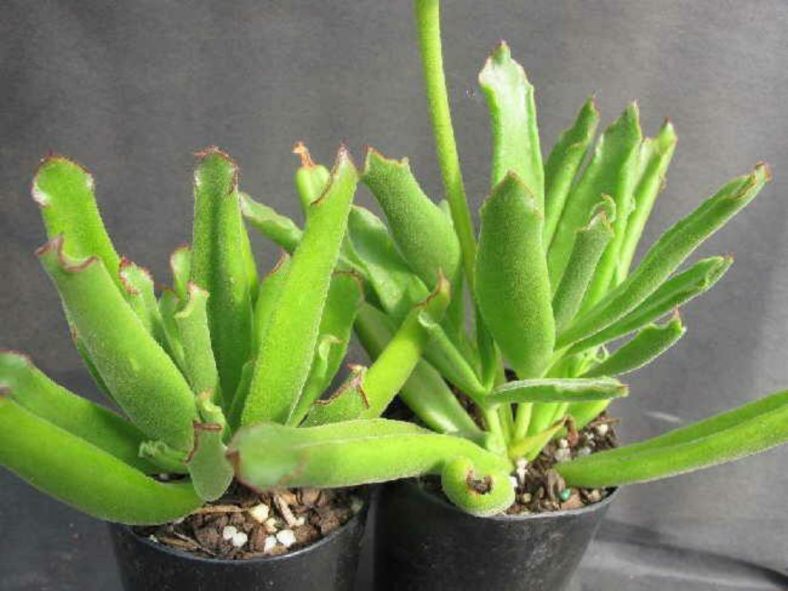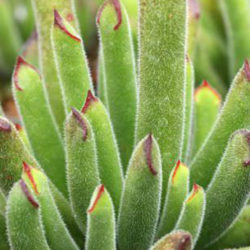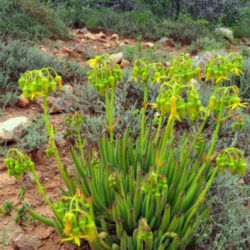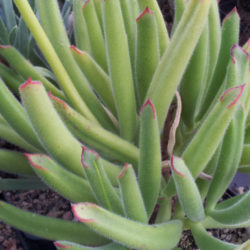Scientific Name
Cotyledon campanulata Marloth
Synonym(s)
Cotyledon teretifolia, Cotyledon campanulata var. campanulata
Scientific Classification
Family: Crassulaceae
Subfamily: Kalanchoideae
Genus: Cotyledon
Description
Cotyledon campanulata is a succulent shrublet with spreading to decumbent branches and finger-like, finely hairy, green to yellowish-green leaves with often heart-shaped tips with an undulating, reddish-brown margin. It grows up to 8 inches (20 cm) tall, much branched from the base. The leaves are opposite, linear to lance-shaped, up to 5.2 inches (13 cm) long and 1.4 inches (3.5 cm) broad.
The flowers are cylindrical to urn-shaped, with yellow, reflexed petals, and appear rect and up to 12 inches (30 cm) tall stalks in summer. The inflorescence is a thyrse with 3 to 5 dichasia, each with 3 to 8 flowers. The flower stalk is e.
Origin
Cotyledon campanulata is native to South Africa. It usually grows in clumps on lower slopes and in depressions from east of Willowmore to Graaff-Reinet and the Fish River valley in the Eastern Cape province.

Hardiness
USDA hardiness zone 9b to 11b: from 25 °F (−3.9 °C) to 50 °F (+10 °C).
How to Grow and Care
Cotyledons can be divided into two groups. One group consists of evergreen plants with a summer growing period. The other group is made up of deciduous plants, splendidly magnificent with large, solid fleshy stems. The second group grows during the winter and sheds its leaves during the summer.
Cotyledons require a free-draining gritty mix and plenty of sunlight. They tolerate cool, frost-free conditions during the winter if kept dry. Some require pruning to maintain an attractive shape. Cotyledons should be kept in a sunny position. Follow general succulent watering procedures. Be careful of overwatering when they are deciduous.
As succulents go, Cotyledons certainly are rewarding garden and indoor subjects, practically independent of irrigation in all but full desert conditions. However, they cannot survive poor light or bad drainage in the wet.
Feed it once or twice during the growing season with a fertilizer specifically formulated for cactus and succulents (poor in nitrogen), including all micronutrients and trace elements diluted to ½ the strength recommended on the label.
See more at How to Grow and Care for Cotyledon.
Links
- Back to genus Cotyledon
- Succupedia: Browse succulents by Scientific Name, Common Name, Genus, Family, USDA Hardiness Zone, Origin, or cacti by Genus
Photo Gallery
Click on a photo to see a larger version.


